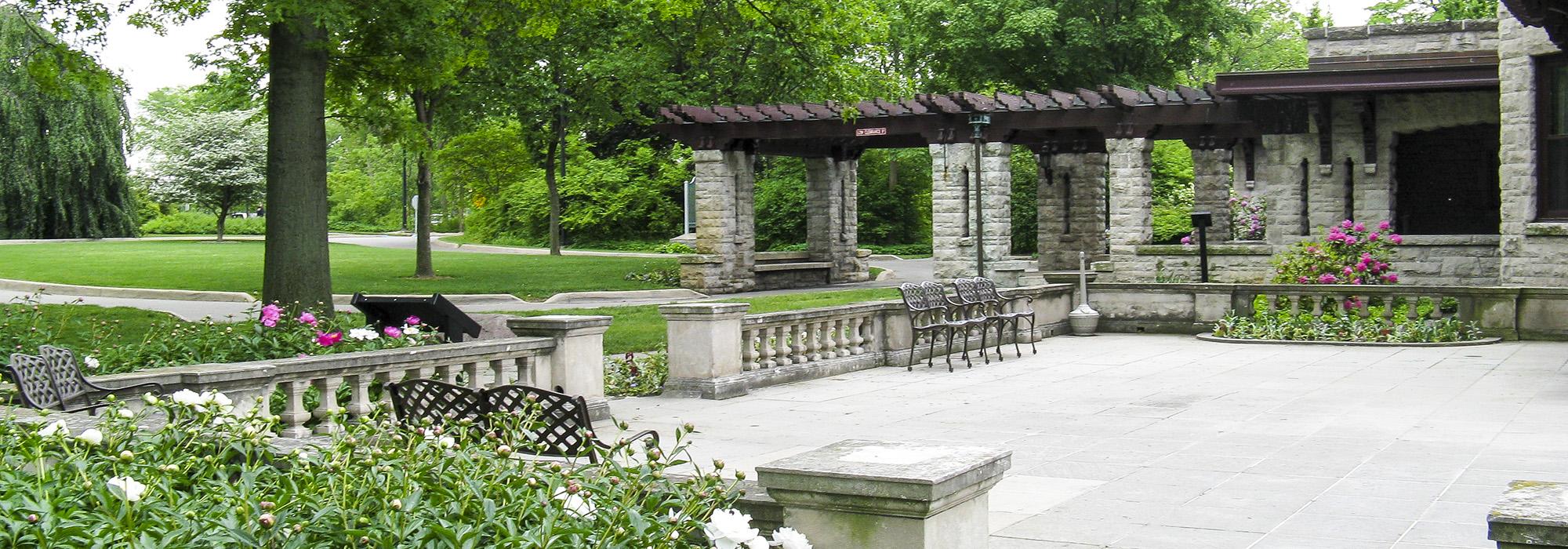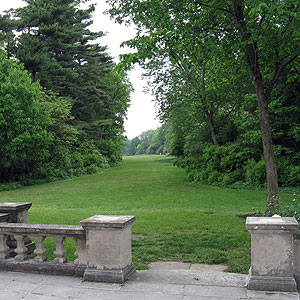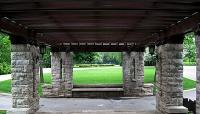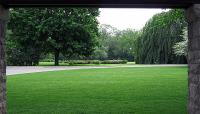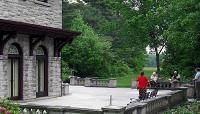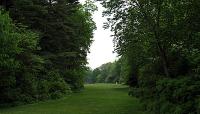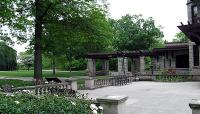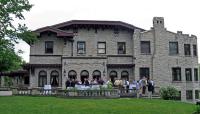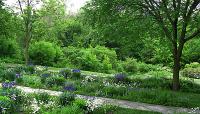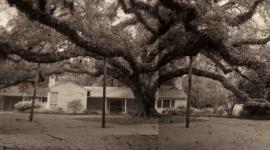Landscape Information
When automotive pioneer Henry Ford and his wife, Clara, purchased 1,300 acres along Rouge River in 1915, they hired architects Von Holst & Fyfe from Chicago and Pittsburgh’s William Van Tine to design the country residence, Fair Lane. Von Holst recommended landscape architect Jens Jensen to solve grading problems at the house’s foundation. Ultimately, Jensen designed a hydro-electric generating plant and returned the farm to meadows and open fields, carving out a pond, orchards, a hillside grotto, and formal gardens. Appearing to be river rapids, Jensen’s power plant featured rustic terraces with flagstone patios and boat tie-ups. Mindful of Ford’s ornithological interests, Jensen selected plants for food and nesting potential and placed some 500 birdhouses around the property. When Clara commissioned rosarian Harriett Foote and landscape architect Herbert Kellaway to create a formal rose garden more than an acre in size within meadow expanse and against Jensen’s wishes, Jensen resigned from the Fair Lane project. Within Michigan, Jensen designed other Ford properties, including Gaukler Pointe, the Henry Ford Hospital in Detroit, and Greenfield Village.
In 1952, Ford Motor Company purchased Fair Lane from the Ford heirs. In 1957, the company donated the residence, powerhouse, 210 acres, and $6.5 million to the University of Michigan to create their Dearborn campus. Fair Lane was designated a National Historic Landmark in 1966.



